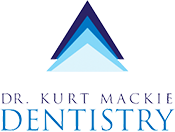You’ll always hear your dentist in Boerne say just how important brushing and flossing are to your oral and overall health. However, the order in which these tasks are performed can significantly impact their effectiveness. Let’s explore the proper steps to take when flossing and brushing your teeth, emphasizing the crucial role of flossing before brushing.
Step 1: Begin with Flossing
Flossing is often an overlooked but vital step in achieving optimal oral health. It helps remove plaque and food particles from between your teeth and along the gumline, areas that a toothbrush alone may struggle to reach. Flossing before you brush your teeth will help loosen up any of these lingering pieces of food, bacteria, or plaque and then you can brush them away. To ensure you get the most out of your flossing routine, follow these steps:
- Choose the Right Floss: There are various types of dental floss available, including waxed and unwaxed, flavored and unflavored, and dental tape. Select one that suits your preference to encourage consistent use.
- Take an Adequate Amount of Floss: A general rule of thumb is to use about 18 inches of dental floss. Wind most of it around the finger of one hand and the rest around another finger of the other hand, leaving a few inches of floss in between.
- Use Proper Technique: Hold the floss between your thumbs and index fingers, leaving a one-inch section for cleaning. Gently slide the floss between your teeth, curving it around each tooth in a ‘C’ shape. Be careful not to snap or force the floss as it may injure your gums.
- Clean Both Sides of Each Tooth: As you move from tooth to tooth, ensure you clean both sides of each tooth, reaching down to the gumline. This comprehensive approach helps eliminate hidden plaque and bacteria.
Step 2: Move on to Brushing
Now that you’ve thoroughly cleaned the spaces between your teeth, it’s time to move on to brushing. Brushing helps remove remaining plaque, bacteria, and debris from the surfaces of your teeth. Here’s how to make the most of your brushing routine:
- Choose the Right Toothbrush: Select a toothbrush with soft bristles to avoid damaging your enamel and gums. Electric toothbrushes can also be effective, providing consistent and thorough cleaning.
- Apply the Right Amount of Toothpaste: A pea-sized amount of fluoride toothpaste is sufficient for effective cleaning. Excessive toothpaste can lead to foaming and may not provide additional benefits.
- Brush in Circular Motions: Hold your toothbrush at a 45-degree angle to your gums and brush in gentle circular motions. Ensure you cover all surfaces of your teeth, including the fronts, backs, and chewing surfaces.
- Don’t Forget Your Tongue and Gumline: Gently brush your tongue to remove bacteria and refresh your breath. Additionally, pay attention to your gumline, as this area is prone to plaque buildup.
- Replace Your Toothbrush Regularly: If your toothbrush bristles become frayed or worn, it’s time for a replacement. Old toothbrushes may not clean your teeth effectively and can harbor bacteria.
By following this comprehensive flossing and brushing routine, you can significantly enhance and protect your oral health. Remember, consistency is key. Aim to floss and brush at least twice a day, and don’t forget to schedule regular dental check-ups and cleanings with your dentist in Boerne.


